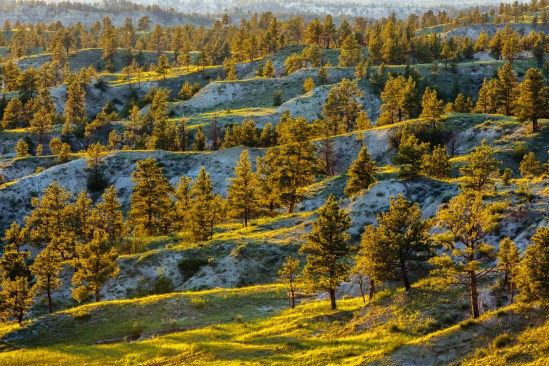Live vicariously through photographer Charlie Bulla and escape to Big Sky Country right now (we won’t tell your boss)
Along the southern edge of the one-million-acre Charles M. Russell National Wildlife Refuge, the vast Montana prairie abruptly falls away and becomes the rugged Missouri Breaks. Because of its pristine habitat and remote wildness, this area is known by sportsmen and wildlife enthusiasts as some of the country’s most unique and productive country for elk, mule deer, and bighorn sheep.


Much of this country is public land managed by the Bureau of Land Management (BLM) and, for the first time in over 20 years, the agency is updating its Resource Management Plan (RMP) that will guide the future management of these important lands. The TRCP and other sportsmen’s groups are advocating for a new and important conservation tool called Backcountry Conservation Areas (BCAs), which would be used to protect the Breaks from fragmentation and development while maintaining Americans’ access for traditional uses, such as grazing, hunting, and range improvement.


The importance and beauty of these remote lands, and the need for a tool to help protect them, is hard to put into words. So we asked Charlie Bulla, a professional photographer, to capture the essence of the unique landscape of the Missouri Breaks. Having never been to this part of Montana, Bulla was blown away by what he saw, calling the landscape “visually timeless and so precious.” Bulla said his respect for public lands only grew as he explored the area.


Bulla returned with dozens of breathtaking pictures. We’re hoping these images serve as proof that the Missouri Breaks are more than worthy of conservation—they demand it.


How can you help conserve the Missouri Breaks? The BLM is making final touches to its draft RMP and is expected to release the draft to the public soon. When they do, your input and comments will matter. Help us urge the BLM to conserve the best backcountry in the Missouri Breaks. Sign up at sportsmenscountry.org to pledge your support for backcountry conservation, and we’ll keep you informed throughout the BLM’s planning process. Sportsmen like you should continue to have a say in the future management of this unique fish and wildlife habitat.











I have thoroughly enjoyed seeing the photographs taken by Charlie Bulla. We have a beautiful, large, diverse country of magnificent vistas, animals and vegetation. I so appreciate these photos, and will keep them in my computer for pure enjoyment.
Amazing shots guys. All of the sudden I want to go to Montana a little more.